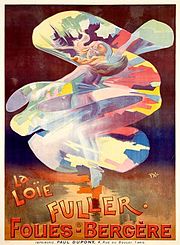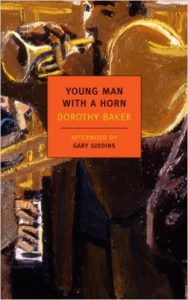In the early 1960s an album called “The First Family” appeared, comedy bits making fun of the Kennedy White House. Vaughan Meader played JFK. It was the hottest record in the country for a while. (After Kennedy’s assassination, Lenny Bruce’s first words onstage were, “Vaughan Meader is screwed.”) Anyway, one cut from it satirizes the TV tour that Jackie Kennedy gave of art works in the White House. On the album she goes from painting to painting saying, “Well, there’s this one….and this one…..and this great big one here…..and this little teeny one down here….” I’m reminded of that as I sit here about to broach the subject of Debussy’s influence on Bix Beiderbecke. The young man from Davenport, Iowa is fiercely remembered as a great jazz cornetist of the 1920s, but less so for his amazing (and stranger) piano compositions which began with things like the whole-tone scale and got more complicated from there. Others have delved into the technical aspects of this influence. All I can do is point and say, “There’s the link! You can hear it!” But what a thing it is to hear:
Voiles by Debussy (from Preludes, 1910)
“Voiles” was inspired by the famous “scarf dances” of Loie Fuller….
….though probably not one as fast as this:
Loie Fuller Dancing With Big Scarves, 1896
Actually Loie Fuller is sometimes erroneously credited with performances by Papinta, The Flame Dancer:
Scarf Dance Wrongly Attributed to Fuller
But that’s neither nor there. My point is, Compare “Voiles” with this:
In a Mist by Bix Beiderbecke (1927)
Not all of his contemporaries fell back in awe. In his memoirs clarinetist Mezz Mezzrow wrote: “Bix was already reaching out beyond the frontiers of jazz into some strange musical jungle where he hoped to find Christ-knows-what….Over and over he would play the peculiar ‘modern’ music that was like a signpost to him showing him where he thought he had to go. These musical tangents, leading to a dozen different detours, were all scrambled up with the jazz in Bix’s head, and that mess led him finally to compose “In a Mist.”
For the record, Bix left behind three other such messes, less famous, in the same vein. They too are wonderful:
Unlike “In a Mist,” these recordings are not by Bix himself because he didn’t live long enough to make them.
Jazz critic Gary Giddins mentions the Debussy-Bix connection in his afterword to Dorothy Baker’s jazz novel from the 50s, Young Man With a Horn. Pick it up and blow out of Squaresville.




